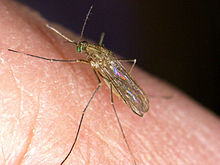
Today is the equinox. Fall is here, yet outside it's warm and all the flowers are blooming.
Health, Microbes, and More


Today is the equinox. Fall is here, yet outside it's warm and all the flowers are blooming.
 This site spends a lot of time discussing the nasal passages and sinuses. That's why a study focusing on the average number of hairs in the nose drew my attention.
This site spends a lot of time discussing the nasal passages and sinuses. That's why a study focusing on the average number of hairs in the nose drew my attention.
The study won a 2023 Ig Nobel Award in medicine. The Ig Awards are basically a good-natured parody of Nobel prizes, where studies that at first seem silly, but then make you think, win awards.
The University of California researchers used 20 cadavers (10 male and 10 female dead persons) to study whether a person has the same number of hairs in both nostrils.
They carefully counted the number of hairs in each nostril and found that people generally have between 120 and 122 hairs per nostril. [The article is behind a paywall, so I searched and found that one mention of the study said on average there were 120 nose hairs on the left side and 112 on the right side.]
Another finding: the hair grows in the front of the nostril and only grows to a height of 0.81 to 1.035 centimeters.
From Ars Technica: Meet the winners of the 2023 Ig Nobel Prizes
Medicine Prize ...continue reading "The Number of Hairs In Each Nostril"

Great news! A good chemical-free way to prevent mosquitoes from bothering you when sitting outside is to just set up a fan nearby and turn it on. Mosquitos are weak flyers and this will keep them away.
The head guy in the fight against mosquitos and West Nile Virus in NYC (Dr. Bajwa, a medical entomologist) turns on a pedestal fan when sitting outside his home. No chemicals needed!
Bottom line: Using a fan can ward off mosquitoes. People differ in the types of fans they like to use (oscillating fan, stationary fan, ceiling fan). By the way, a breezy or windy day is also great in keeping mosquitos away.
From the NY Times: In a Decaying Queens Fortress, It’s One Man Versus 47 Kinds of Mosquito
He has his own method of dealing with mosquitoes. “When I find myself relaxing in my backyard, I always set up a pedestal fan,” he wrote. “Mosquitoes happen to be weak fliers, unable to contend with even a gentle breeze.” When he does get bitten, he added, “I make a conscious effort not to give in to the temptation of scratching.”
The NY Times wrote about this method already back in 2010: The Claim: To Repel Mosquitoes, Use a House Fan ...continue reading "Wind From A Fan Can Keep Mosquitoes Away"
 Over the years I've talked to many people who have had sinus surgeries for chronic sinusitis, many of whom have had more than one surgery. And yet they keep suffering from chronic sinusitis for years . The big question: How many people are actually helped or cured by standard sinus surgery such as FESS (Functional Endoscopic Sinus Surgery)?
Over the years I've talked to many people who have had sinus surgeries for chronic sinusitis, many of whom have had more than one surgery. And yet they keep suffering from chronic sinusitis for years . The big question: How many people are actually helped or cured by standard sinus surgery such as FESS (Functional Endoscopic Sinus Surgery)?
Well, I came across a study from 2016 looking at long-term sinus surgery (FESS) results on 560 adults. Three to 5 years after the FESS surgery, the results were pretty shocking - about 43.7% of persons were still suffering from chronic sinusitis (the researchers called it "uncontrolled"), 36.8% were somewhat better (partly controlled), and only 19.5% were feeling healthy (well controlled). Common sinus symptoms in the "uncontrolled" group were: headache, sleep disturbance, postnasal drip/secretions, and altered sense of smell.
The researchers mentioned another smaller study with similar results that looked at persons 12 years after FESS surgery: 47.4% still had chronic sinusitis (uncontrolled) and only 26.3% were doing well (controlled). They also concluded: "Therefore, better treatment strategies leading to higher disease control are warranted in CRS (chronic rhinosinusitis) care."
Hello?? Instead of surgery, try focusing on the sinus microbiome by using beneficial bacteria such as L. sakei (in Lanto Sinus, kimchi). Researchers are looking at using beneficial bacteria in the future for sinusitis treatment.
The abstract or study summary from Allergy (the European Journal of Allergy and Clinical Immunology): Real-life study showing uncontrolled rhinosinusitis after sinus surgery in a tertiary referral centre
ABSTRACT: Objectives: To study the degree of CRS control using novel EPOS control criteria at 3–5 years after a functional endoscopic sinus surgery (FESS) and correlate these data to symptoms scores. ...continue reading "Study Shows High Levels of Chronic Sinusitis After Sinus Surgery"
 Great news! A recent study found that older adults who get routine vaccinations have a lower risk of developing Alzheimer's disease and related dementias. Other studies looking at adults over the age of 60 and routine vaccinations (flu, pneumonia) have had similar findings.
Great news! A recent study found that older adults who get routine vaccinations have a lower risk of developing Alzheimer's disease and related dementias. Other studies looking at adults over the age of 60 and routine vaccinations (flu, pneumonia) have had similar findings.
The vaccinations that were looked at in this study were: the shingles (herpes zoster) vaccine, pneumococcal vaccine, and tetanus-diphtheria vaccine. Each of the vaccines lowered the risk of getting AD - the tetanus-diphtheria (Tdap/Td) by 30%, the shingles vaccine by 25%, and the pneumococcal vaccine by 27%. The adults were at least 65 years of age at the start of the study.
Why would vaccines be protective? There are multiple theories, including that infection may play a role in the development of Alzheimer's disease (AD), and vaccines reduce the risk for infections. Or that vaccines may activate the immune system in such a way that alters the risk for developing AD.
Bottom line: In persons over the age of 60, getting routine adult vaccinations (including the flu vaccine) may lower the risk of developing AD. So simple!
From Medical Xpress: Several vaccines associated with reduced risk of Alzheimer's disease in adults 65 and older
Prior vaccination against tetanus and diphtheria, with or without pertussis (Tdap/Td); herpes zoster (HZ), better known as shingles; and pneumococcus are all associated with a reduced risk for developing Alzheimer's disease, according to new research from UTHealth Houston. ...continue reading "Routine Vaccines Associated With A Reduced Risk of Developing Alzheimer’s Disease"
 Hope your Labor Day was restful!
Hope your Labor Day was restful!
Record-breaking heat coming up this week in much of the United States.

We can not get away from microplastics - the teeny, tiny plastic particles that are a result of plastics breaking up over time. They are everywhere, including the air over polar regions and in the air spewed out in the sea spray from waves.
Researchers sampled and analyzed air off the Norwegian coast up to the Arctic region. They found that all air samples contained microplastics. The plastic particles they found included polyester particles (from textiles), polystyrene, polypropylene, polyurethane, and tire wear particles (from driving and braking). Sources of the plastic particles came from both land (e.g., textiles, tire particles) and sea (e.g., boat paint).
Microplastics are plastic particles less than 5 mm (0.20 in) in length. Rain, water (e.g., seas, rivers), wind and air transport the plastic particles throughout the world. This microplastic pollution is of concern to all of us because we are breathing them in, and they are in the products we use (e.g., toothpaste), foods we eat, and the beverages we drink, including bottled water.
The big questions: What are the microplastic particles doing to us and wildlife? Are they getting into our organs? Are they causing chronic inflammation or other problems? Hint: Yes and yes, according to research. Even our lungs and blood.
From Science Daily: Oceans release microplastics into the atmosphere
Tiny plastic particles can be found in the sea air even far from coasts, according to a study recently published in the journal Nature Communications. The microplastics come from partly unexpected sources. ...continue reading "Microplastics Are Even In Ocean Waves and Air"

It turns out that even making minor adjustments to your usual diet can improve the gut microbiome (the community of bacteria, fungi, viruses living in the gut) within a few weeks. Two separate studies found that eating some peanuts daily or adding some herbs or spices to the foods you eat can improve the numbers of beneficial bacteria living in the gut.
 In the peanut study - eating or not eating peanuts didn't change the diversity or main types of bacteria living in the gut. But eating peanuts did increase the numbers of several beneficial species --Roseburia and Ruminococcaceae, which are butyrate producing bacteria (good!). The peanut group ate 28 grams of peanuts (1 ounce or about 33 peanuts) as a night-time snack for 6 weeks.
In the peanut study - eating or not eating peanuts didn't change the diversity or main types of bacteria living in the gut. But eating peanuts did increase the numbers of several beneficial species --Roseburia and Ruminococcaceae, which are butyrate producing bacteria (good!). The peanut group ate 28 grams of peanuts (1 ounce or about 33 peanuts) as a night-time snack for 6 weeks.
In the spice and herb study, adding a combination of spices and herbs to the diet for 4 weeks increased microbial diversity in the gut (good!), and also increased beneficial Ruminococcaceae numbers (good!) in persons at risk for heart disease. Faecalibacterium and Agathobacter numbers also increased (good!). A variety of dried spices and herbs (1/8 tsp, 3/4 tsp. or 1/1/2 tsp) were added to foods in the daily diet, and not taken as a capsule.
Dried spices added to foods in the spice and herb study included coriander, cumin, allspice, cinnamon, oregano, thyme, onion powder, garlic, ginger, rosemary, thyme, basil, black pepper, paprika, parsley, red pepper, etc. - 24 in all!
Bottom line: These studies agree with other research finding that eating peanuts (and all sorts of nuts, legumes), as well as adding spices and herbs to your foods is beneficial to the gut microbiome. They feed beneficial microbes in your gut, have all sorts of micronutrients, and they also have multitudes of microbes. A win-win.
From Science Daily: Peanuts and herbs and spices may positively impact gut microbiome
Adding a daily ounce of peanuts or about a teaspoon of herbs and spices to your diet may affect the composition of gut bacteria, an indicator of overall health, according to new research from Penn State. In two separate studies, nutritional scientists studied the effects of small changes to the average American diet and found improvements to the gut microbiome. ...continue reading "Adding Herbs and Spices To Your Foods Improves Gut Microbiome"

Today I saw some amazing photos that capture the moment of human ovulation. One can clearly see the egg emerging from a follicle on the ovary. Fertile women release one or more eggs each month.
The photos were taken in 2008 when Dr. Jacques Donnez was performing a hysterectomy on a 45 year old woman and saw that ovulation was occurring. The ovulation he witnessed took about 15 minutes.
By the way, it was the first time human ovulation was caught on camera.

From June 11, 2008 BBC News: Ovulation moment caught on camera
A human egg has been filmed in close-up emerging from the ovary for the first time, captured by chance during a routine operation.
Fertile women release one or more eggs every month, but until now, only animal ovulation has been recorded in detail. ...continue reading "Observing Human Ovulation"
 There is nothing so refreshing as some cold ice cream on a hot summer day. But rather than viewing it as a guilty pleasure, research actually finds that it has health benefits!
There is nothing so refreshing as some cold ice cream on a hot summer day. But rather than viewing it as a guilty pleasure, research actually finds that it has health benefits!
Studies find that ice cream eaters have a lower risk of developing type 2 diabetes. This is the same level of protection as eating yogurt.
What? Yup, studies found this health benefit, but it doesn't fit the prevailing dietary view of ice cream being an unhealthy food that should be avoided. So... the researchers of the studies didn't discuss the findings, and instead the results were hidden away. In other words, a case of bias.
By the way, cheese has had the same kind of bias against it for years (all that fat!), but finally the research finding health benefits is being discussed in the media (Consumer Reports).
Excerpts from The Atlantic: NUTRITION SCIENCE’S MOST PREPOSTEROUS RESULT Studies show a mysterious health benefit to ice cream. Scientists don’t want to talk about it.
Back in 2018, a Harvard doctoral student named Andres Ardisson Korat was presenting his research on the relationship between dairy foods and chronic disease to his thesis committee. One of his studies had led him to an unusual conclusion: Among diabetics, eating half a cup of ice cream a day was associated with a lower risk of heart problems. Needless to say, the idea that a dessert loaded with saturated fat and sugar might actually be good for you raised some eyebrows at the nation’s most influential department of nutrition. ...continue reading "Studies Find That Ice Cream Has Health Benefits"